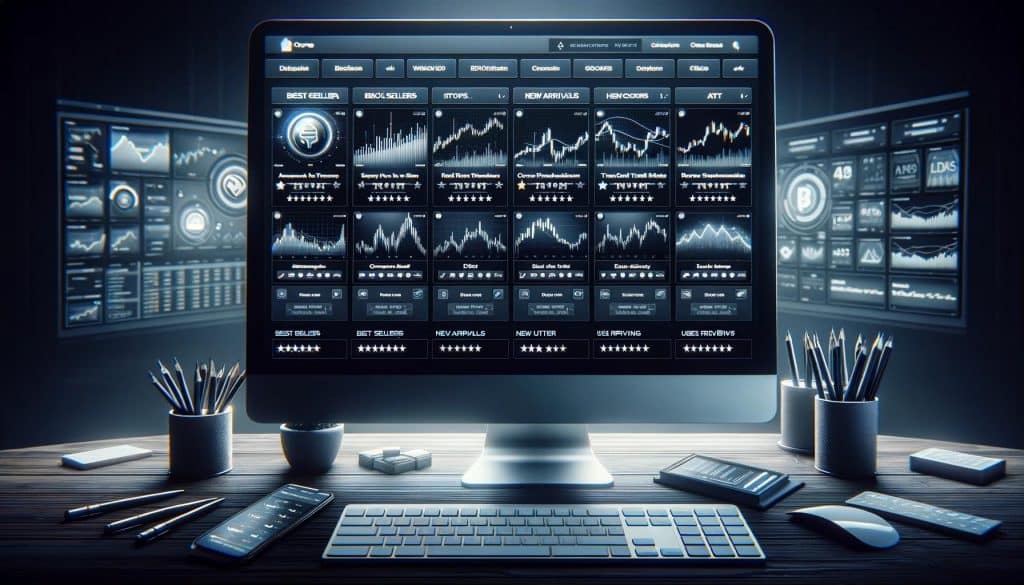The realm of Forex trading, with its vast opportunities and inherent complexities, has always presented a unique set of challenges and rewards for traders around the globe. In this ever-evolving market, the pursuit of maximizing profitability and efficiency has led to the rise of solutions for automated trading in Forex. These innovative systems, powered by sophisticated algorithms and Expert Advisors (EAs), have transformed the way trades are executed, offering a pathway to success that was once thought to be only accessible to the most experienced traders. This article delves deep into the world of solutions for automated trading in Forex, providing a comprehensive guide to navigating this landscape for unparalleled trading success.

The Basics of Automated Forex Trading
What Is Automated Forex Trading?
Automated Forex trading is the use of software applications, known as Expert Advisors (EAs), to conduct trading on the Forex market with minimal human intervention. These EAs are designed to execute trades based on predefined strategies and criteria, ranging from simple indicators to complex algorithms that analyze market conditions in real time.
Imagine a scenario where a trader utilizes an EA that’s programmed to buy EUR/USD whenever the 50-day moving average crosses above the 200-day moving average, a common strategy known as the “Golden Cross.” The EA continuously monitors the Forex market’s price action, executing buy orders when this condition is met, without requiring the trader to manually place the trade. This not only saves time but also eliminates the emotional pitfalls that often lead to hasty trading decisions.
How Does Automated Forex Trading Work?
At its core, automated Forex trading involves three key steps: strategy development, backtesting, and execution. Traders first develop a trading strategy based on market analysis and technical indicators, which is then translated into a set of rules that can be programmed into an EA. The effectiveness of this strategy is often tested through backtesting, where the EA runs against historical market data to evaluate its potential profitability and risk.
For instance, a trader might backtest an EA designed for scalping, a strategy aimed at making profits from small price changes, to ensure it can achieve a consistent win rate under various market conditions. Once satisfied with the backtesting results, the trader then deploys the EA on a trading platform like MetaTrader 4 (MT4), where it automatically executes trades according to its programming.

The Profitability of Automated Forex Trading
The question of whether automated Forex trading is profitable is multifaceted, depending on the strategy’s effectiveness, risk management, and adaptability to market changes. While EAs offer the promise of passive income and strategic precision, their success is largely influenced by the trader’s ability to select and fine-tune the right automated system.
The advantages of automated Forex trading are numerous. It allows for round-the-clock trading without the need for constant market monitoring, provides a disciplined approach free from emotional biases, and enables extensive backtesting to refine strategies before they’re executed live. However, the profitability of automated trading is not guaranteed; it requires a comprehensive understanding of both market dynamics and the technical aspects of the trading system being used.
Is Automated Forex Trading Profitable?
The profitability of automated Forex trading hinges on various factors, including the chosen strategy’s alignment with market conditions, the efficiency of the EA, and the trader’s skill in managing and adjusting the system. While stories of significant profits entice many into automated trading, it’s essential to approach these solutions with a realistic perspective, understanding both their potential and limitations.
For example, a trader might use an EA that capitalizes on high volatility events like news releases, employing a straddle strategy that places buy and sell orders around a set price. If the EA is well-designed, it can quickly execute trades to capture profits from the resulting price movements. However, the strategy’s profitability would largely depend on precise timing and the ability to avoid slippage, illustrating the nuanced balance between strategy and execution in automated trading’s success.
Benefits of Automated Forex Trading
Automated trading systems offer several compelling advantages:
- Efficiency and Consistency: EAs operate 24/7, executing trades at speeds no human can match, with unwavering adherence to the programmed strategy.
- Emotionless Trading: Automating trading decisions helps avoid emotional trading pitfalls, ensuring a more disciplined approach to the Forex market.
- Backtesting Capability: Traders can validate their strategies by backtesting EAs against historical data, a critical step in developing a profitable system.
Despite these advantages, the effectiveness of an automated trading system ultimately depends on the trader’s ability to select and fine-tune the right EA and to adapt strategies as market conditions change.

Solutions for Automated Trading in Forex
Selecting the Right Automated Trading Software
Choosing the right EA is paramount for successful automated trading. Factors to consider include the software’s track record, compatibility with MT4, and the ability to customize settings according to personal trading preferences. Traders should seek out EAs with transparent performance histories and robust user support.
kokoshell.com’s Expert Advisors for MetaTrader 4
kokoshell.com offers a suite of EAs designed for MetaTrader 4, emphasizing ease of use, advanced risk management features, and comprehensive backtesting results. While highlighting kokoshell.com’s offerings, it’s important for traders to conduct their due diligence, comparing these EAs against their trading objectives and risk tolerance levels.

Implementing Automated Trading Strategies
Developing a Winning Automated Trading Strategy
Effective automated trading strategies are well-researched, meticulously tested, and aligned with the trader’s overall goals. This section would delve into the process of strategy development, from market analysis to programming nuances, offering insights into creating EAs that can navigate the complexities of the Forex market.
Risk Management in Automated Trading
A key component of successful automated trading is robust risk management. This part would cover strategies for setting appropriate stop-loss orders, managing leverage, and adjusting EAs in response to market volatility, ensuring that traders can safeguard their investments while pursuing profitability.

Conclusion: Maximizing Success with Automated Forex Trading
In conclusion, automated Forex trading offers a promising avenue for enhancing trading performance, but it requires a careful, informed approach. By selecting the right EAs, developing sound strategies, and adhering to strict risk management principles, traders can leverage automation to potentially achieve greater profitability and efficiency in the Forex market.

FAQs: Solutions for Automated Trading in Forex
What is automated Forex trading?
Automated Forex trading involves using software, known as Expert Advisors (EAs), to execute trades on the Forex market according to pre-defined strategies and rules. These systems can analyze market data, make trading decisions, and execute trades without direct human intervention, operating 24/7 on platforms like MetaTrader 4.
How can I start with automated Forex trading?
To start with automated Forex trading, first, choose a reliable Forex trading platform that supports automation, such as MetaTrader 4 (MT4). Next, select an Expert Advisor (EA) that aligns with your trading strategy and risk tolerance. Install the EA on your MT4 platform, configure its settings, and test it using a demo account before going live to ensure it performs as expected.
Is automated Forex trading profitable?
Automated Forex trading can be profitable, but it depends on various factors, including the quality of the Expert Advisor (EA), the effectiveness of the underlying trading strategy, and proper risk management. Success in automated trading also requires regular monitoring and adjustment of the EA to adapt to changing market conditions.
Can I use multiple EAs on the same account?
Yes, you can use multiple EAs on the same MetaTrader 4 account. However, it’s important to ensure that the EAs do not conflict with each other, especially if they trade similar instruments or use a significant portion of your account’s margin. It’s advisable to test the combined effect of running multiple EAs in a demo environment before applying them to a live account.
How do I choose the right EA for automated trading in Forex?
Choosing the right EA involves researching and evaluating various factors, such as the EA’s trading strategy, historical performance, risk management features, and user reviews. Look for EAs that offer transparency in their trading logic and performance metrics. Additionally, consider EAs that are compatible with your trading goals and risk tolerance.
What are the risks of automated Forex trading?
The risks of automated Forex trading include technical failures, such as connectivity issues or software glitches, and the potential for significant losses if the EA does not perform as expected or if market conditions change rapidly. Effective risk management strategies and regular monitoring of the EA’s performance are essential to mitigate these risks.
How can I minimize risks in automated Forex trading?
To minimize risks in automated Forex trading, employ comprehensive risk management strategies, including setting stop-loss orders, using appropriate leverage, and regularly reviewing and adjusting the EA’s settings based on market performance and volatility. Additionally, diversifying your trading strategies and conducting thorough backtesting can help reduce risk.





